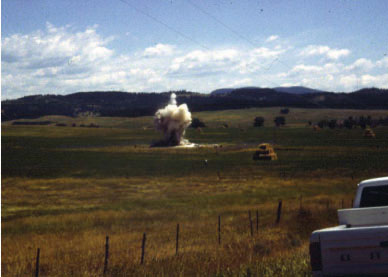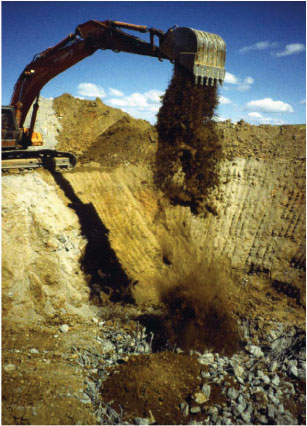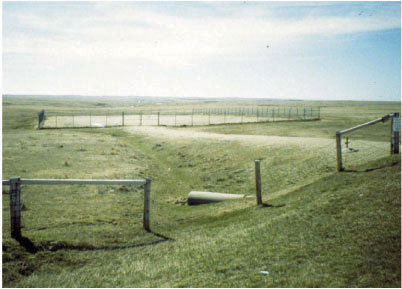Deactivation of Minuteman II Sites
In the United States, the START agreement coincided with growing Air Force disenchantment with the escalating costs associated with repairing and maintaining the older Minuteman II system. Rather than upgrade Minuteman II facilities to Minuteman III technologies, the Pentagon decided to deactivate the entire Minuteman II force to help comply with provisions of the arms-reduction treaty. On 27 September 1991 President George H.W. Bush announced on national television a dramatic "plan for peace," designed to reduce the tensions of the nuclear age. As one component of his plan, he called for "the withdrawal from alert within seventy-two hours, of all 450 Minuteman II intercontinental ballistic missiles."
After the signing of the START Treaty and the stand down ordered by President Bush, the Air Force began the deactivation of Minuteman II ICBM sites, including the 150 Minuteman II LFs and fifteen LCFs at Ellsworth Air Force Base in South Dakota. Additional Minuteman II installations were associated with Strategic Air Command(SAC) bases at Malmstrom Air Force Base in Montana and Whiteman Air Force Base in Missouri. At Whiteman Air Force Base, all 150 of its Minuteman II LFs were imploded by 1997, but the underground Launch Control Center (LCC), Oscar-01, located on base, was retained for public interpretation. The 150 Minuteman II sites at Malmstrom Air Force Base were converted to Minuteman III systems and the necessary missiles were transferred from the Grand Forks Minuteman III installation, which was then deactivated.
A complex system governed the deactivation and dismantlement of the LFs and the LCFs. The individual Air Force bases executed the technical part of missile site deactivation, removing the missiles and other sensitive equipment and then they turned the LFs and LCFs over to the Army Corps of Engineers (Army Corps) and its consultants to begin the demolition of the sites. The Army Corps managed the demolition of the missile sites, much as they had overseen the construction of the sites. The Army Corps contracted the demolition and salvage work to private-sector companies, but these companies needed to comply with procedures governed by the START Treaty. Following the dismantlement, the sites were returned to the Air Force for property disposal.
The landmark START Treaty governed the removal of the Minuteman II missiles and the destruction of the LFs. LF elimination began with the opening of the silo door. From this point forward, the process of deactivating the LF took less than 180 days. A series of agreements between the United States and the former Soviet Union allowed the weapons-grade nuclear material from the warheads to be either used for fuel in nuclear reactors or disposed of along with other high-level radioactive waste. Hazardous materials were then removed from the site and contractors salvaged steel and other equipment. Destruction of the silos could be accomplished either by implosion to at least six meters (twenty feet) below ground level or by excavating the former silo to a depth of at least eight meters (twenty-six feet). The silo site then had to remain open for ninety days to allow Soviet satellites time to verify that the removal complied with treaty provisions. After the ninety-day period, crews covered the silo with a concrete cap and graded the top of the silo opening with gravel. Elimination of the LCFs followed the dismantling of the LFs. Communications systems were dismantled and removed, equipment was salvaged, and hazardous materials removed. The Hardened Intersite Cable System (HICS) was severed to render it inoperable and the underground LCCs were welded shut and the elevator shafts were filled in.

Missile silo implosion, South Dakota

Missile silo being filled after implosion, South Dakota

Launch Facility after completion of deactivation, South Dakota